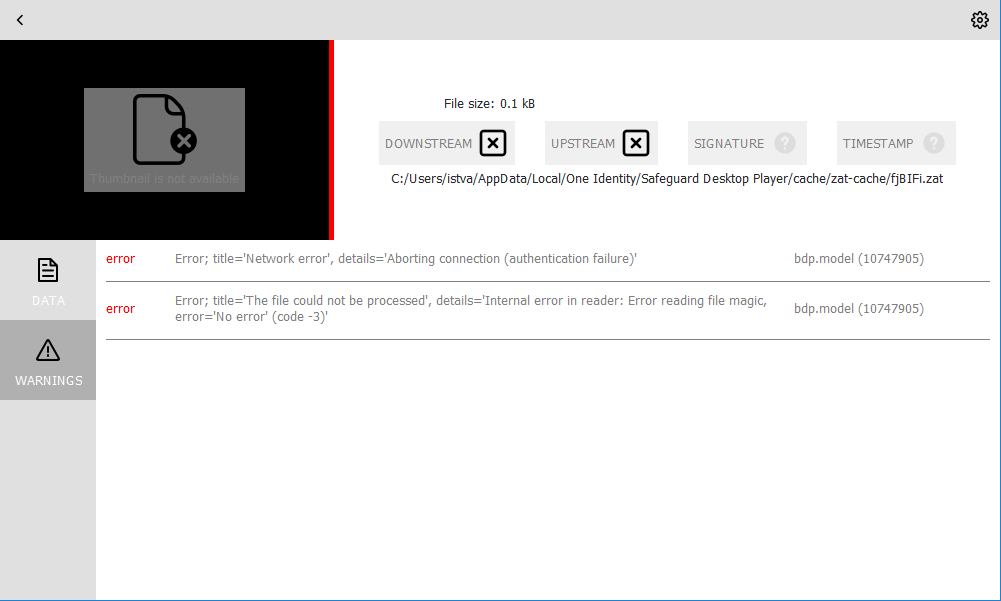Some video card drivers might have problems with OpenGL rendering: fonts do not appear correctly, or the Safeguard Desktop Player application crashes when started with warnings about the graphics card. If this happens, Safeguard Desktop Player tries to fall back to software rendering, but it might fail to do so.
To force software rendering, start Safeguard Desktop Player using the Safeguard Desktop Player - software rendering item in your application menu, or with the --software command-line option:
On Microsoft Windows, you cannot import CA certificates from a shared drive.
Copy the certificate to a local folder and import it from there.
Also, you must install the Safeguard Desktop Player application locally, you cannot start the player.exe file from a shared drive.
The Safeguard Desktop Player application displays important log messages on the Warnings tab. If you increase the log level of the application above the default, additional log messages are also displayed.
Figure 14: Warnings and logs

To specify the log level of the Safeguard Desktop Player application, use the following command-line parameters.
- -l or --log-level <number>
-
Set the log level of Safeguard Desktop Player:
For example:
- -o or --log-output <path-to-logfile>
-
Specify the path and filename of the log file. For example:
- -s or --log-spec <log-spec>
-
Specify different log levels for certain components of Safeguard Desktop Player. For example:
You can use the following keyboard shortcuts to control the replay.
-
Play/Pause: SPACE
-
Jump to previous event: p
-
Jump to next event: n
-
Enable video scaling (Scale video): Ctrl + Z
-
Toggle fullscreen replay: f
-
Decrease replay speed: [
-
Increase replay speed: ]
-
Reset replay speed :=
-
Jump backward, short, medium, long: Shift + Left Arrow, Alt + Left Arrow, Ctrl + Left Arrow
-
Jump forward, short, medium, long: Shift + Right Arrow, Alt + Right Arrow, Ctrl + Right Arrow
-
Search in trail content: Ctrl + F

